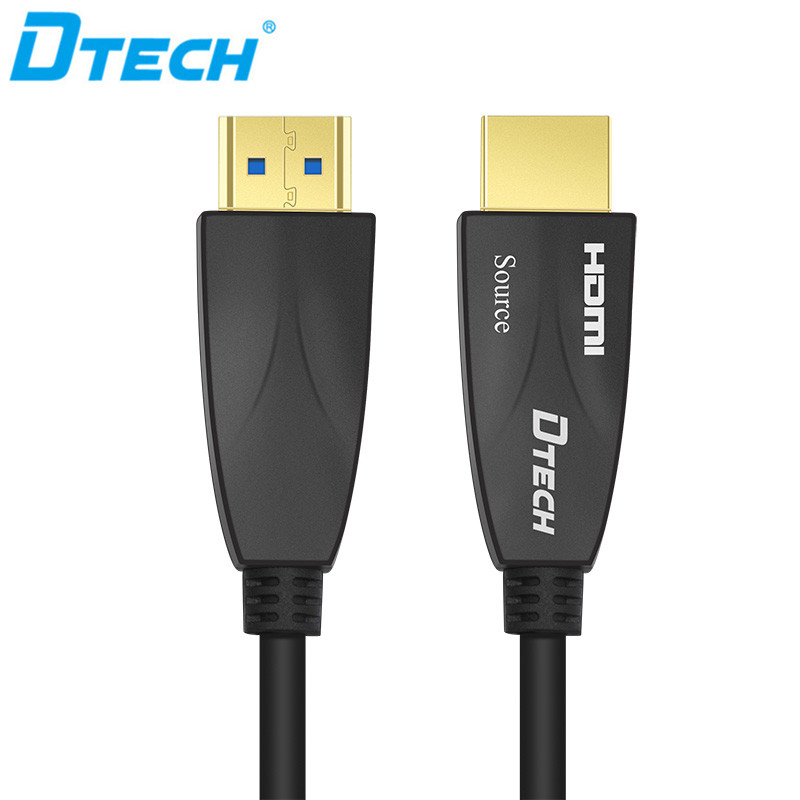
Tel : +86 13430398209
Email : export@dtechelectronics.com
Email : amber@dtechelectronics.com
Email : Hermadi@dtech.cn(Indonesia)
Tel : +86 13430398209
Email : export@dtechelectronics.com
Email : amber@dtechelectronics.com
Email : Hermadi@dtech.cn(Indonesia)
What are the differences between fiber optic HDMI cables and regular HDMI cables?
1) Transmission Medium and Principle
Regular HDMI cables: Transmit signals via copper wires, using electrical transmission methods (coaxial/twisted pair, etc.), making them more susceptible to electromagnetic interference and crosstalk.
Fiber optic HDMI cables: Transmit signals internally via optical fiber, using light signals for transmission. They have extremely strong anti-interference capabilities, low attenuation, and are suitable for long-distance transmission.
2) Transmission Distanceg
Regular HDMI cables: With high-quality copper cables, the common effective transmission distance is a few meters to tens of meters. Beyond a certain distance, signal attenuation becomes significant, requiring repeaters/amplifiers.
Fiber optic HDMI cables: Designed for even longer transmission distances, commonly reaching 10–1000 feet (approximately 3–300 meters, depending on the product). The longer the distance, the more pronounced the advantages.
3) Signal Loss and Quality
Regular HDMI cables: Signal attenuation is linear with distance, and high-quality shielding, coils, and shielding layers are required. Over long distances, issues such as screen flickering, black screens, and color distortion may occur.
Fiber Optic HDMI Cables: Extremely low attenuation, more stable transmission quality, almost unaffected by surrounding electromagnetic interference, and more consistent image quality.
4) Bandwidth and Resolution
Regular HDMI Cables: Commonly support HDMI 1.4/2.0, etc. Resolution is limited by cable specifications and length. 4K 60Hz may be limited over longer distances if the cable quality is insufficient.
Fiber Optic HDMI Cables: Typically designed to stably support 4K 60Hz and even higher resolutions and HDR (depending on the specific model; confirm supported HDMI versions, bandwidth, and protocols). The longer the distance, the greater the advantage.




--------------占位---------------
© Copyright: 2025 Guangzhou Dtech Electronics Technology Co.,Ltd. All Rights Reserved.
